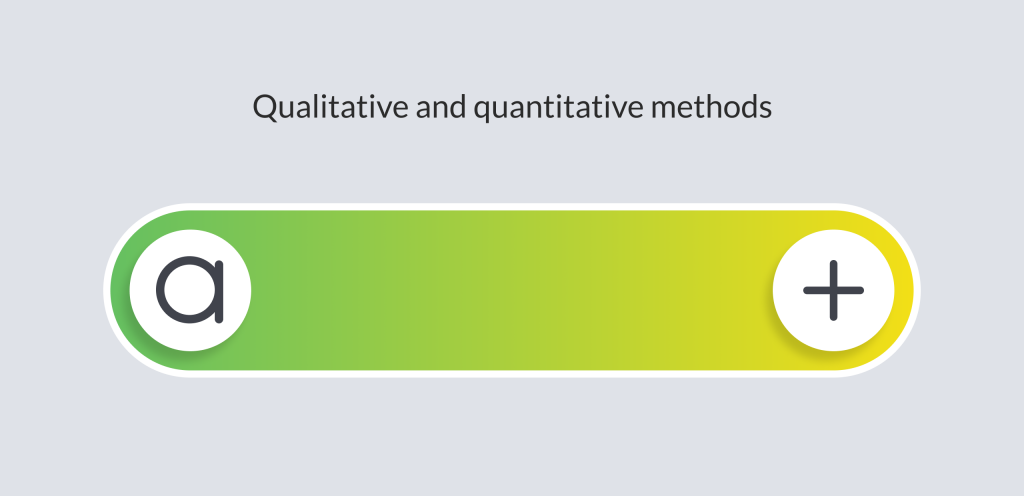
User research analysis is the process of examining and interpreting the data collected during user research studies.
By analyzing this data, you can uncover behavior patterns, identify user needs, and gain valuable insights that can inform the design and development of digital products.
Imagine you’ve conducted a survey to understand how users interact with a new app. The survey responses provide a treasure trove of information, but it’s like having a jumbled puzzle. User research analysis helps you piece together the puzzle, revealing the overall user experience and the areas that need improvement.
User research analysis is a systematic and rigorous process of examining and interpreting data collected during user research studies.
It involves a deep dive into the collected data, going beyond surface-level observations to uncover themes that lead to insights that can inform design decisions.
By understanding the underlying reasons for user actions, you can make informed decisions to enhance their overall experience.
For example, suppose you observe that a significant number of users are abandoning their shopping carts during checkout. In that case, user research analysis can help you pinpoint the specific reasons behind this behavior. Is it a complex payment process? Is it a lack of trust in the website’s security? By identifying the root cause, you can address it effectively, leading to a higher conversion rate.
While the terms analysis and synthesis are often used interchangeably in the context of user research, they represent distinct phases in the user research process.
The analysis focuses on breaking down the data into its components, examining each piece in detail to identify patterns, trends, and anomalies.
The synthesis, on the other hand, takes these analyzed pieces and reassembles them into a cohesive whole. It’s about connecting the dots, drawing insights from the individual elements, and weaving them together to form a comprehensive understanding of the user experience.
Think of it as assembling a puzzle. Analysis involves sorting and identifying each piece, while synthesis involves placing pieces together to reveal the complete picture.
Both analysis and synthesis are crucial steps in the user research process. Analysis provides the building blocks, while synthesis constructs the meaningful framework. Together, they provide a deeper understanding of user behavior.
User research analysis is not a one-time event; it’s an ongoing process that should be integrated throughout the entire user research journey. Here are some key points to consider:
Even before data collection begins, user research analysis plays a crucial role in shaping the research plan. By analyzing existing data, identifying research questions, and defining the scope of the study, you can ensure that the data collected is relevant and useful for addressing the specific design challenges.
As data is collected, preliminary analysis can help identify emerging patterns and potential focus areas. This early insight can guide the direction of the research, allowing for adjustments to the methodology or data collection techniques to ensure that you and your team are gathering the most valuable information.
Once data collection is complete, in-depth analysis takes center stage, which involves organizing, cleaning, and interpreting the data to uncover patterns, trends, and insights.
User research should inform design decisions throughout the entire product development cycle. Therefore, user research analysis should be performed continuously and not be confined to a single stage of the product’s lifecycle. Designers need to constantly analyze user feedback and evaluate the impact of design changes. This way, they can ensure that the product remains aligned with user needs and expectations.

User research analysis encompasses both qualitative and quantitative data, each offering unique insights into user behavior and preferences.
In short, qualitative research involves gathering and analyzing non-numerical data, such as user interviews, observations, and feedback surveys. This data provides rich insights into user thoughts, feelings, and motivations, allowing you to understand the ‘why’ behind their actions.
Quantitative research, on the other hand, focuses on numerical data, such as website analytics, user testing results, and survey responses. This data provides a broader perspective on user behavior, revealing trends, patterns, and statistical relationships.
We write more about this in another article, “Quantitative vs. Qualitative User Research Methods”.
Practical user research analysis involves integrating both qualitative and quantitative data to gain a comprehensive understanding of the user experience. Qualitative data provides the depth and context, while quantitative data provides the breadth and statistical significance.
Data analysis in UX research is a systematic process that involves examining and interpreting both qualitative and quantitative data to uncover hidden patterns, identify user needs, and gain valuable insights that can inform design and development decisions. It involves a deep dive into the collected data, going beyond surface-level observations to understand the underlying reasons for user behavior.
The process of analyzing data in UX research can be broadly divided into three main phases:
The first step in user research analysis is to set clear goals for the analysis and develop a plan for how to achieve them.
As a researcher, you need to plan your research study first. Define research goals, find the specific research questions you want to answer, and the insights you hope to gain.
By clearly defining your goals, you can ensure that the analysis is focused and relevant to the design challenges you are trying to address.
Once you have defined your goals, you can develop a plan for how to analyze the data. This plan should outline the steps you will take, the tools and techniques you will use, and the timeline for completing the analysis. A clear plan will help you stay organized and focused throughout the analysis process.
Before diving into the analysis, taking a step back and thoroughly reviewing the collected data is crucial.
Carefully collect every piece of data you produced and immerse yourself in the transcripts of user interviews, notes of observations you took, and others to understand the raw material you’re working with.
Start by familiarizing yourself with the overall volume and nature of the data. Identify the different types of data you have, such as transcripts, notes, and recordings.
Understand the range of user perspectives, the emerging common themes, and the overall sentiment expressed.
As you review the data, consider specific details that may provide valuable insights. Look for recurring patterns, inconsistencies, and outliers. Note down any observations or questions that arise during your review.
This initial review serves as a foundation for the subsequent analysis steps. It allows you to identify the key areas to focus on and better understand the user experience.
Once you’ve reviewed your data, it’s time to organize it into a format that makes it easy to analyze. In this step, you must create spreadsheets, put codes or tags on the qualitative data, or use data visualization tools – whichever format works best for you.
You can organize the data into different categories or themes for qualitative data, such as transcripts and notes. It will help you identify patterns and trends more quickly. You can use tools such as Dedoose or Atlas.ti to assist with coding.
For quantitative data, such as survey responses and website analytics, you must create spreadsheets or charts to visualize the data. This will help you see trends and patterns that may be hard to notice from the raw data. For most, Microsoft Excel or Google Sheets are the go-to tools for spreadsheets. For charts, you can use tools such as Tableau or Power BI.
Organizing your data will make it much easier to analyze and interpret. It will also help you identify the key areas you must focus on.
With your data organized, it’s time to delve into the heart of user research analysis – uncovering patterns and identifying themes.
Finding themes will require examining the data from multiple perspectives, seeking connections between different pieces of information, and recognizing recurring elements.
For qualitative data, look for words, phrases, and concepts mentioned repeatedly across different interviews with different users and observations similar across separate tests. These recurring elements may indicate important themes or patterns in user behavior and perceptions.
For quantitative data, look for trends, correlations, and outliers that suggest relationships between different variables. These patterns may reveal underlying factors influencing user behavior or preferences.
As you identify patterns and themes, label them with descriptive names or phrases. These labels will help you organize your findings and make them into actionable insights.
Remember, patterns and themes are not always clear-cut; they may emerge gradually and evolve as you delve deeper into the data. Be open to unexpected connections and allow the data to guide your analysis.
Once you’ve identified patterns and themes, it’s time to synthesize your findings into a clear and actionable story. In this step, the goal is to weave together the individual insight into a cohesive narrative that explains user behavior, preferences, and pain points.
Start by summarizing the key patterns and themes you’ve uncovered. Highlight the most significant findings and explain how they relate to the research questions you set out to answer.
Next, draw conclusions from your findings. Explain what your insights mean for the product or service. Identify areas for improvement and suggest potential design solutions.
Finally, share your findings with the relevant stakeholders. You can create a report or a presentation and share your findings with the rest of the team team.
Effective communication is crucial in this step. Tailor your message to your audience, using language and visuals appropriate for their level of understanding. Ensure that your findings are actionable and can be used to inform design decisions.
By synthesizing and sharing your findings, you ensure that the valuable insights gained from user research translate into meaningful change and improvement. Remember, the goal of user research is not just to collect data; it’s to use that data to make informed design decisions that benefit users.
There are various tools and software available to aid in analyzing user research data. The most appropriate tools will depend on the type of data and the specific needs of the user research team.
Some popular tools for analyzing qualitative data include:
Some popular tools for analyzing quantitative data include:
In addition to these general-purpose tools, there are also many specialized tools available for analyzing specific types of user research data, such as eye-tracking data and usability testing data.
The best way to choose the right tools for your user research data analysis needs is to consider the specific needs of your project and the expertise of your team. Try out a few different tools to see which ones you like best.
User research analysis is a crucial step in understanding user behavior and preferences, informing design decisions. It involves a systematic process of examining and interpreting both qualitative and quantitative data to uncover patterns, identify user needs, and gain valuable insights.
By effectively conducting user research analysis, you can transform user feedback into actionable insights that drive product development and enhance user experiences.